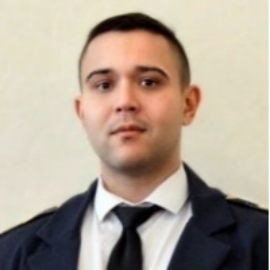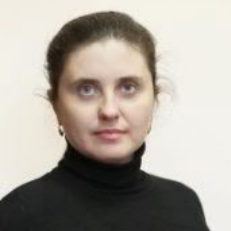International Journal of Intelligent Systems and Applications (IJISA)
IJISA Vol. 16, No. 4, 8 Aug. 2024
Cover page and Table of Contents: PDF (size: 1147KB)
Author(s)
Index Terms
Polymorphic RBF Network, Training, Multi-criteria Optimization, Pareto Front, Radial Basis Functions
Abstract
The work is devoted to the development of the radial basis functions (RBF networks) neural network new architecture – a polymorphic RBF network in which the one-dimensional radial basis functions (RBFs) in the hidden layer instead, multidimensional RBFs are used, which makes it possible to better approximate complex functions that depend on several independent variables. Moreover, in its second layer, the summing the RBF outputs one by one from each group instead, multiplication is used, which allows the polymorphic RBF network to better identify relations between independent variables. Based on the training classical RBF networks evolutionary algorithm, the polymorphic RBF network training algorithm was created, which, through the initializing weight coefficients methods use taking into account the tasks structure and preliminary values, using the mutations tournament selection, adding additional criteria to the fitness function to take into account stability and speed training a polymorphic RBF network, as well as using an evolutionary mutation strategy, allowed us to obtain the lowest errors in training and testing a polymorphic RBF network compared to known RBF network architectures. The created polymorphic RBF network practical application possibility is demonstrated experimentally using the helicopters turboshaft engines (using the example, the TV3-117 turboshaft engine) operating process parameters optimizing solving task using a multicriteria optimization algorithm. The optimal Pareto front was obtained, which made it possible to obtain the engine operation three additional modes: maximum reduction of specific fuel consumption at the total pressure in the compressor increase degree increased value by 5.0 %, specific fuel consumption minimization at the total pressure in the compressor increase degree reduced value by 1.0 %, the total pressure in the compressor increases degree optimal value with a slight increase in specific fuel consumption by 10.5 %. Future research prospects include adapting the developed methods and models into the general concept for monitoring and controlling helicopter turboshaft engines during flight operations. This concept is implemented in the neural network expert system and the on-board automatic control system.
Cite This Paper
Serhii Vladov, Ruslan Yakovliev, Victoria Vysotska, Dmytro Uhryn, Artem Karachevtsev, "Polymorphic Radial Basis Functions Neural Network", International Journal of Intelligent Systems and Applications(IJISA), Vol.16, No.4, pp.1-21, 2024. DOI:10.5815/ijisa.2024.04.01
Reference
[1]J. Bi, Z. Wang, H. Yuan, J. Zhang, and M. C. Zhou, “Self-adaptive teaching-learning-based optimizer with improved RBF and sparse autoencoder for high-dimensional problems”, Information Sciences, vol. 630, pp. 463–481, 2023. https://doi.org/10.1016/j.ins.2023.02.044
[2]W. Jia, D. Zhao, and L. Ding, “An optimized RBF neural network algorithm based on partial least squares and genetic algorithm for classification of small sample”, Applied Soft Computing, vol. 48, pp. 373–384, 2016. https://doi.org/10.1016/j.asoc.2016.07.037
[3]Z. Liu, C.-S. Leung, and H. Cheung So, “Formal convergence analysis on deterministic l1-regularization based mini-batch learning for RBF networks”, Neurocomputing, vol. 532, pp. 77–93, 2023. https://doi.org/10.1016/j.neucom.2023.02.012
[4]Z. Han, X. Qian, H. Huang, and T. Huang, “Efficient design of multicolumn RBF networks”, Neurocomputing, vol. 450, pp. 253–253, 2021. https://doi.org/10.1016/j.neucom.2021.04.040
[5]R. Vaish, S. Tewari, S.M. Tripathi, and U.D. Dwivedi, “Machine Learning Applications in Power System Fault Diagnosis: Research Advancements and Perspectives”, Engineering Applications of Artificial Intelligence, vol. 106, 104504, 2021. https://doi.org/10.1016/j.engappai.2021.104504
[6]A. Panaye, B.T. Fan, J.P. Doucet, X.J. Yao, R.S. Zhang, M.C. Liu, Z.D. Hu, “Quantitative structure-toxicity relationships (QSTRs): a comparative study of various non linear methods. General regression neural network, radial basis function neural network and support vector machine in predicting toxicity of nitro- and cyano- aromatics to Tetrahymena pyriformis”, SAR and QSAR in Environmental Research, vol. 17, 75–91, 2006. https://doi.org/10.1080/10659360600562079
[7]N.K.F. Khah, B. Salehi, P. Kianoush, and S. Varkouhi, “Estimating elastic properties of sediments by pseudo-wells generation utilizing simulated annealing optimization method”, Results in Earth Sciences, vol. 2, 100024, 2024. https://doi.org/10.1016/j.rines.2024.100024
[8]Y. Wu, H. Wang, B. Zhang, and K.-L. Du, “Using Radial Basis Function Networks for Function Approximation and Classification”, International Scholarly Research Notices, vol. 2012, 324194, 2012. https://doi.org/10.5402/2012/324194
[9]K.-L. Du, and M.N.s. Swamy, “Radial Basis Function Networks”, Neural Networks and Statistical Learning, pp. 299–335, 2014. https://doi.org/10.1007/978-1-4471-5571-3_10
[10]A. Ismayilova, and M. Ismayilov, “On the universal approximation property of radial basis function neural networks”, Annals of Mathematics and Artificial Intelligence, 2023. https://doi.org/10.1007/s10472-023-09901-x
[11]D. S. Soper, “Using an Opportunity Matrix to Select Centers for RBF Neural Networks”, Algorithms, vol. 16, iss. 10, 455, 2023. https://doi.org/10.3390/a16100455
[12]M. Gan, H. Peng, and X.-p. Dong, “A hybrid algorithm to optimize RBF network architecture and parameters for nonlinear time series prediction”, Applied Mathematical Modelling, vol. 36, pp. 2911–2919, 2012. https://doi.org/10.1016/j.apm.2011.09.066
[13]D. Xu, Z. Hui, Y. Liu, and G. Chen, “Morphing control of a new bionic morphing UAV with deep reinforcement learning”, Aerospace Science and Technology, vol. 92, pp. 232–243, 2019. https://doi.org/10.1016/j.ast.2019.05.058
[14]Q. Junfei, M. Xi, and L. Wenjing, “An incremental neuronal-activity-based RBF neural network for nonlinear system modeling”, Neurocomputing, vol. 302, pp. 1–11, 2018. https://doi.org/10.1016/j.neucom.2018.01.001
[15]S. Ding, L. Xu, C. Su, and F. Jin, “An optimizing method of RBF neural network based on genetic algorithm”, Neural Computing and Applications, vol. 21, iss. 2, pp. 333–336, 2012. https://doi.org/10.1007/s00521-011-0702-7
[16]F. J. Pontes, A. P. de Paiva, P. P. Balestrassi, J. R. Ferreira, and M. B. da Silva, “Optimization of Radial Basis Function neural network employed for prediction of surface roughness in hard turning process using Taguchi’s orthogonal arrays”, Expert Systems with Applications, vol. 39, iss. 9, pp. 7776–7787, 2012. https://doi.org/10.1016/j.eswa.2012.01.058
[17]Q.-Y. Chen, L. Chen, J.-N. Su, M.-J. Fu, and G.-Y. Chen, “Model selection for RBF-ARX models”, Applied Soft Computing, vol. 121, 108723, 2022. https://doi.org/10.1016/j.asoc.2022.108723
[18]D. G. B. Franco, and M. T. A. Steiner, “New Strategies for Initialization and Training of Radial Basis Function Neural Networks”, IEEE Latin America Transactions, vol. 15, iss. 6, pp. 1182–1188, 2017. https://doi.org/10.1109/TLA.2017.7932707
[19]F. N. Mojarrad, M. H. Veiga, J. S. Hesthaven, and P. Offner, “A new variable shape parameter strategy for RBF approximation using neural networks”, Computers & Mathematics with Applications, vol. 143, pp. 151–168, 2023. https://doi.org/10.1016/j.camwa.2023.05.005
[20]F. Ros, M. Pintore, A. Deman and J. R. Chretien, “Automatical initialization of RBF neural networks”, Chemometrics and Intelligent Laboratory Systems, vol. 87, iss. 1, pp. 26–32, 2007. https://doi.org/10.1016/j.chemolab.2006.01.008
[21]S. Vladov, Y. Shmelov, R. Yakovliev, and M. Petchenko, “Modified Neural Network Method for Trend Analysis of Helicopter Turboshaft Engine Parameters at Flight Modes”, CEUR Workshop Proceedings, vol. 3347, pp. 11–29, 2022.
[22]S. Kim, J. H. Im, M. Kim, J. Kim, and Y. I. Kim, “Diagnostics using a physics-based engine model in aero gas turbine engine verification tests”, Aerospace Science and Technology, vol. 133, 108102, 2023. https://doi.org/10.1016/j.ast.2022.108102
[23]X. Li, and W. Yu, “Dynamic system identification via recurrent multilayer perceptrons”, Information Sciences, vol. 147, iss. 1–4, pp. 45–63, 2002. https://doi.org/10.1016/S0020-0255(02)00207-4
[24]J. Struye, and S. Latre, “Hierarchical temporal memory and recurrent neural networks for time series prediction: An empirical validation and reduction to multilayer perceptrons”, Neurocomputing, vol. 396, pp. 291–301, 2020. https://doi.org/10.1016/j.neucom.2018.09.098
[25]Q. Que, and M. Belkin, “Back to the Future: Radial Basis Function Network Revisited”, IEEE Transactions on Pattern Analysis and Machine Intelligence, vol. 42, pp. 1856–1867, 2020. https://doi.org/10.1109/TPAMI.2019.2906594
[26]D. Lowe, “Radial Basis Function Networks – Revisited”, Mathematics Today, vol. 51, iss. 3, pp. 124–126, 2015.
[27]A. Alexandrov, and S. Dudarov, “One-dimensional alternative for multidimensional neural network of radial basis functions”, Advances in chemistry and chemical technology, vol. 32, no. 11, pp. 13–15, 2022.
[28]I. Markin, and S. Dudarov, “An artificial neural network of radial basis functions using a perceptron as an output layer”, Advances in chemistry and chemical technology, vol. 36, no. 11, pp. 74–76, 2022.
[29]Gh. A. Montazer, R. Sabzevari, and F. Ghorbani, “Three-phase strategy for the OSD learning method in RBF neural networks”, Neurocomputing, vol. 72, iss. 7–9, pp. 1797–1802, 2009. https://doi.org/10.1016/j.neucom.2008.05.011
[30]Z. Geng, J. Chen, and Y. Han, “Energy Efficiency Prediction Based on PCA-FRBF Model: A Case Study of Ethylene Industries”, IEEE Transactions on Systems, Man, and Cybernetics: Systems, vol. 47, issue 8, pp. 1763–1773, 2016. https://doi.org/10.1109/TSMC.2016.2523936
[31]Y. Zhao, D. Si, J. Pei, and X. Yang, “Geodesic Basis Function Neural Network”, IEEE Transactions on Neural Networks and Learning Systems, vol. 35, issue 6, pp. 8386–8400, 2022. https://doi.org/10.1109/TNNLS.2022.3227296
[32]S. Vladov, Y. Shmelov, and R. Yakovliev, “Modified Neural Network Method for Diagnostics the Helicopters Turboshaft Engines Operational Status at Flight Modes”, in: Proceedings of the IEEE International Conference on System Analysis & Intelligent Computing (SAIC), Kyiv, Ukraine, October 04–07, 2022, pp. 224–229. https://doi.org/10.1109/SAIC57818.2022.9923025
[33]Y. Xi, H. Peng, and X. Chen, “A sequential learning algorithm based on adaptive particle filtering for RBF networks”, Neural Computing and Applications, vol. 25, issue 3–4, pp. 807–814, 2014. https://doi.org/10.1007/s00521-014-1551-y
[34]Y. Zelenkov, “Method of multi-criterial optimization based on approximate models of the researched object”, Numerical Methods and Programming, vol. 11, pp. 250–260, 2010.
[35]V. Vichugov, “Modified gradient algorithm for training radial-basis neural networks”, Bulletin of the Tomsk Polytechnic University, vol. 315, no. 5, pp. 149–152, 2009.
[36]R. Kumar, “Recurrent context layered radial basis function neural network for the identification of nonlinear dynamical systems”, Neurocomputing, vol. 580, 127524, 2024. https://doi.org/10.1016/j.neucom.2024.127524
[37]N. Bezzubov, and S. Feofilov, “Application of radial-basis function networks in self-adjust adaptive systems”, System analysis, management and information processing, no. 1, pp. 47–52, 2023.
[38]J. Maatta, V. Bazaliy, J. Kimari, F. Djurabekova, K. Nordlund, and T. Roos, “Gradient-based training and pruning of radial basis function networks with an application in materials physics”, Neural Networks, vol. 133, pp. 123–131, 2021. https://doi.org/10.1016/j.neunet.2020.10.002
[39]L. E. Aik, W. H. Tan, and A. K. Junoh, “An Improved Radial Basis Function Networks in Networks Weights Adjustment for Training Real-World Nonlinear Datasets”, IAES International Journal of Artificial Intelligence (IJ-AI), vol. 8(1), no. 63, pp. 63–76, 2019. http://doi.org/10.11591/ijai.v8.i1.pp63-76
[40]A. L. da Costa Oliveira, A. Britto, and R. Gusmao, “A framework for inverse surrogate modeling for fitness estimation applied to Multi-Objective Evolutionary Algorithms”, Applied Soft Computing, vol. 146, 110672, 2023. https://doi.org/10.1016/j.asoc.2023.110672
[41]T. V. Avdeenko, K. E. Serdyukov, and Z. B. Tsydenov, “Formulation and research of new fitness function in the genetic algorithm for maximum code coverage”, Procedia Computer Science, vol. 186, pp. 713–720, 2021. https://doi.org/10.1016/j.procs.2021.04.194
[42]L. Deng, C. Li, Y. Lan, J. Sun, and C. Shang, “Differential evolution with dynamic combination based mutation operator and two-level parameter adaptation strategy”, Expert Systems with Applications, vol. 192, 116298, 2022. https://doi.org/10.1016/j.eswa.2021.116298
[43]S. Gupta, and R. Su, “An efficient differential evolution with fitness-based dynamic mutation strategy and control parameters”, Knowledge-Based Systems, vol. 251, 109280, 2022. https://doi.org/10.1016/j.knosys.2022.109280
[44]H. V. H. Ayala, D. Habineza, M. Rakotondrabe, and L. Coelhod, “Nonlinear black-box system identification through coevolutionary algorithms and radial basis function artificial neural networks,” Applied Soft Computing, vol. 87, 105990, 2020. https://doi.org/10.1016/j.asoc.2019.105990
[45] Y. Ji, Z. Yang, J. Run, and H. Li, “Multi-objective parameter optimization of turbine impeller based on RBF neural network and NSGA-II genetic algorithm”, Energy Reports, vol. 7, suppl. 7, pp. 584–593, 2021. https://doi.org/10.1016/j.egyr.2021.10.003
[46]S. Vladov, Y. Shmelov, and R. Yakovliev, “Optimization of Helicopters Aircraft Engine Working Process Using Neural Networks Technologies”, CEUR Workshop Proceedings, vol. 3171, pp. 1639–1656, 2022.
[47]H. Augun, “Thermodynamic, environmental and sustainability calculations of a conceptual turboshaft engine under several power settings”, Energy, vol. 245, 123251, 2022. https://doi.org/10.1016/j.energy.2022.123251
[48]S. Vladov, Y. Shmelov, and R. Yakovliev, “Method for Forecasting of Helicopters Aircraft Engines Technical State in Flight Modes Using Neural Networks”, CEUR Workshop Proceedings, vol. 3171, pp. 974–985, 2022.
[49]S. Vladov, Y. Shmelov, and R. Yakovliev, “Modified Method of Identification Potential Defects in Helicopters Turboshaft Engines Units Based on Prediction its Operational Status”, in: Proceedings of the 2022 IEEE 4th International Conference on Modern Electrical and Energy System (MEES), Kremenchuk, Ukraine, October 20–22, 2022, pp. 556–561. https://doi.org/10.1109/MEES58014.2022.10005605
[50]S. Vladov, Y. Shmelov, and R. Yakovliev, “Modified Searchless Method for Identification of Helicopters Turboshaft Engines at Flight Modes Using Neural Networks”, in: Proceedings of the IEEE 3rd KhPI Week on Advanced Technology, Kharkiv, Ukraine, October 03–07, 2022, pp. 257–262. https://doi.org/10.1109/KhPIWeek57572.2022.9916422
[51]S. Vladov, Y. Shmelov, R. Yakovliev, M. Petchenko, and S. Drozdova, “Helicopters Turboshaft Engines Parameters Identification at Flight Modes Using Neural Networks”, in: Proceedings of the IEEE 17th International Conference on Computer Science and Information Technologies (CSIT), Lviv, Ukraine, November 10–12, 2022, pp. 5–8. https://doi.org/10.1109/CSIT56902.2022.10000444
[52]S. Vladov, Y. Shmelov, R. Yakovliev, and M. Petchenko, “Neural Network Method for Parametric Adaptation Helicopters Turboshaft Engines On-Board Automatic Control”, CEUR Workshop Proceedings, vol. 3403, pp. 179–195, 2023.
[53]S. Vladov, R. Yakovliev, O. Hubachov, J. Rud, Y. Stushchanskyi, “Neural Network Modeling of Helicopters Turboshaft Engines at Flight Modes Using an Approach Based on “Black Box” Models”, CEUR Workshop Proceedings, vol. 3624, pp. 116–135, 2024.
[54]S. Vladov, R. Yakovliev, M. Bulakh, and V. Vysotska, “Neural Network Approximation of Helicopter Turboshaft Engine Parameters for Improved Efficiency”, Energies, vol. 17(9), 2233, 2024. https://doi.org/10.3390/en17092233
[55]S. Vladov, R. Yakovliev, V. Vysotska, M. Nazarkevych, and V. Lytvyn, “Restoring lost information method from complex dynamic object sensors based on auto-associative neural networks”, Applied System Innovation, vol. 7(3), 53, 2024. https://doi.org/10.3390/asi7030053
[56]F. S. Corotto, “Appendix C - The method attributed to Neyman and Pearson”, Wise Use of Null Hypothesis Tests, pp. 179–188, 2023. https://doi.org/10.1016/B978-0-323-95284-2.00012-4
[57]F. V. Motsnyi, “Analysis of Nonparametric and Parametric Criteria for Statistical Hypotheses Testing. Chapter 1. Agreement Criteria of Pearson and Kolmogorov”, Statistics of Ukraine, no. 4’2018 (83), pp. 14–24, 2018. https://doi.org/10.31767/su.4(83)2018.04.02
[58]M. Li, H. Ma, S. Lv, L. Wang and S. Deng, “Enhanced NSGA-II-based feature selection method for high-dimensional classification”, Information Sciences, vol. 663, 120269, 2024. https://doi.org/10.1016/j.ins.2024.120269
[59]Z. Zhang, X. Cheng, Z. Xing, and X. Gui, “Pareto multi-objective optimization of metro train energy-saving operation using improved NSGA-II algorithms”, Chaos, Solitons & Fractals, vol. 176, 114183, 2023. https://doi.org/10.1016/j.chaos.2023.114183
[60]P. Gao, Y. Wang, H. Wang, C. Song, S. Ye, and X. Wang, “A Pareto front-based approach for constructing composite index of sustainability without weights: A comparative study of implementations”, Ecological Indicators, vol. 155, 110919, 2023. https://doi.org/10.1016/j.ecolind.2023.110919
[61]N. Polkovnikova, “Hybrid expert system based on probabilistic deterministic models”, Izvestiya SFedU. Engineering Sciences, no. 6 (167), pp. 168–179, 2015.
[62]Q. Ye, W. Wang, G. Li, and R. Dai, “A self-organizing assisted multi-task algorithm for constrained multi-objective optimization problems”, Information Sciences, vol. 664, 120339, 2024. https://doi.org/10.1016/j.ins.2024.120339
[63]K.-J. Du, J.-Y. Li, H. Wang, and J. Zhang, “Multi-objective multi-criteria evolutionary algorithm for multi-objective multi-task optimization”, Complex & Intelligent Systems, vol. 9, pp. 1211–1228, 2023. https://doi.org/10.1007/s40747-022-00650-8
[64]T. Liguo, and S. Novikova, “Application of step-by-step training method for evolutionary algorithm in multicriterial optimization problems”, VKGEU, vol. 14, no. 3 (55), pp. 114–125, 2022.
[65]T. Liu, S. Song, X. Li, and L. Tan, “Approximating Pareto Optimal Set by An Incremental Learning Model”, in: Proceedings of the IEEE Congress on Evolutionary Computation, CEC 2021, Kraków, Poland, June 28 – July 1, 2021, pp. 169–176. https://doi.org/10.1109/CEC45853.2021.9504996
[66]S. Zheng and R. Feng, “A variable projection method for the general radial basis function neural network”, Applied Mathematics and Computation, vol. 451, 128009, 2023. https://doi.org/10.1016/j.amc.2023.128009
[67]Z. Hu, Yu.A. Ushenko, I.V. Soltys, O.V. Dubolazov, M.P. Gorsky, O.V. Olar, and L.Yu. Trifonyuk, Digital Image Processing and Analysis Techniques, Springer Singapore, Singapore, 2024, 115 p. https://doi.org/10.1007/978-981-99-8228-8
[68]Y. Shmelov, S. Vladov, Y. Klimova, and M. Kirukhina, “Expert system for identification of the technical state of the aircraft engine TV3-117 in flight modes”, in: Proceedings of the System Analysis & Intelligent Computing: IEEE First International Conference on System Analysis & Intelligent Computing (SAIC), Kyiv, Ukraine, 08–12 October 2018, pp. 77–82. https://doi.org/10.1109/SAIC.2018.8516864
[69]Cherrat, E. M., Alaoui, R., & Bouzahir, H. (2020). Score Fusion of Finger Vein and Face for Human Recognition based on Convolutional Neural Network Model. International Journal of Computing, 19(1), 11-19. https://doi.org/10.47839/ijc.19.1.1688




